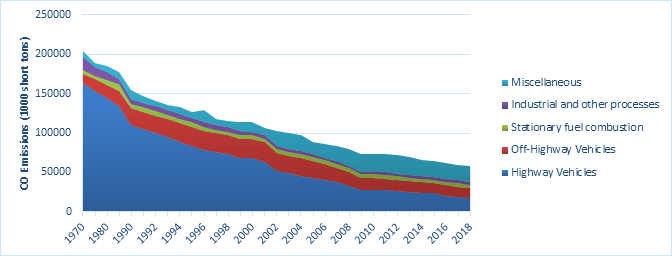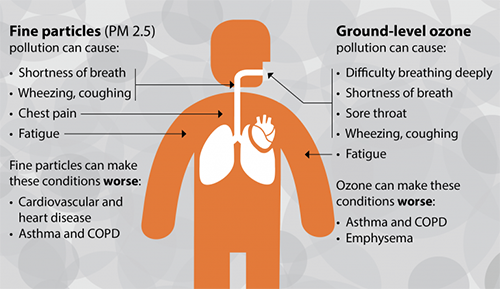More than 40 years of clean air policies and regulations from the U.S. Environmental Protection Agency have improved air quality, safeguarding peoples’ health and sustaining the environment.

The 1970 Clean Air Act gave the agency authority to set and implement emissions standards to control pollution. This included everything from passenger vehicles, heavy duty trucks and buses, construction and farm equipment, locomotive and marine engine, and even lawn and garden equipment. As a result, carbon monoxide emissions from motor vehicles, in particular, have gone down significantly.
In November, the Twin Cities region went into attainment for carbon monoxide air quality, which means the region has met or done better than the National Ambient Air Quality Standards for more than 20 years.
Freeway ramp metering, other measures help reduce pollutants
 This good news brings a renewed focus on all transportation-related emissions. Along with carbon monoxide, air pollutants like ozone and particulate matter continue to affect the health of people in the region. Transportation is also a major contributor to regional greenhouse gas emissions.
This good news brings a renewed focus on all transportation-related emissions. Along with carbon monoxide, air pollutants like ozone and particulate matter continue to affect the health of people in the region. Transportation is also a major contributor to regional greenhouse gas emissions.
The Met Council uses air quality goals as a measure for awarding federal transportation funds to local projects through the Congestion Mitigation and Air Quality Improvement Program. We have also prioritized reducing emissions for other transportation programs, including travel demand management, transitway expansion, highway expansion and highway system management.
These funds have and continue to support transportation control measures like metering freeways, easing local congestion and improving transit, all feeding into the striking reduction in carbon monoxide emissions.
The region’s guiding document, Thrive MSP 2040, emphasizes the protection and enhancement of the cultural and built environment and quality of life, including air quality and its impacts on residents. The Met Council remains committed to reducing emissions along with complying with federal air quality standards.
Minnesota Pollution Control Agency air quality information
Current air quality in Minnesota